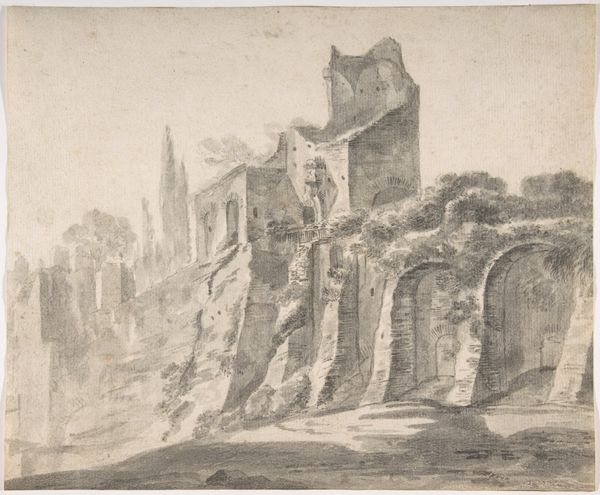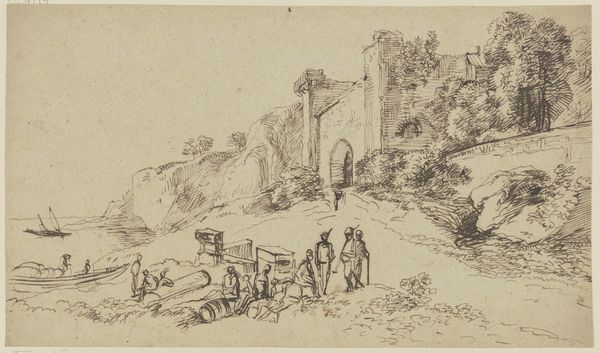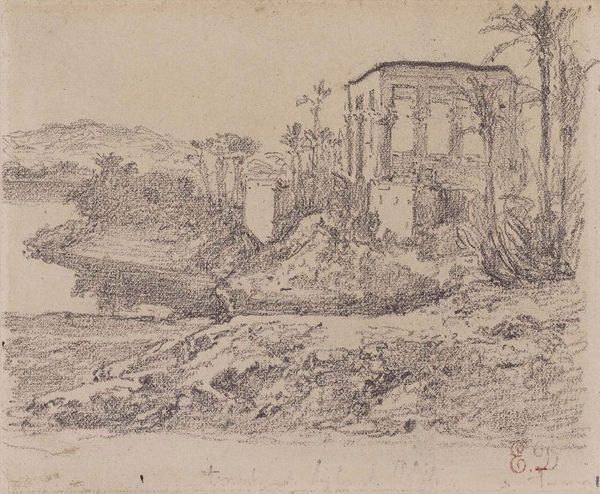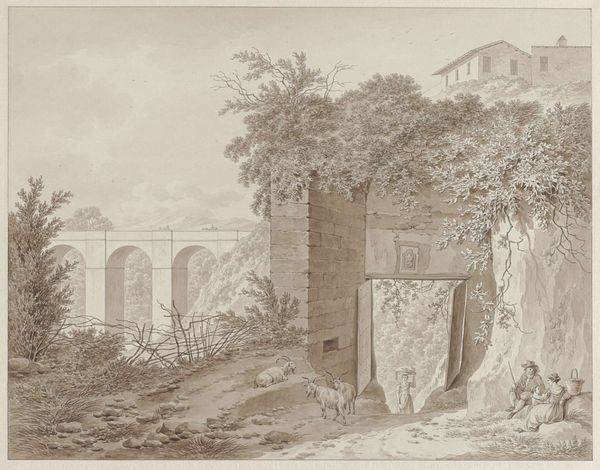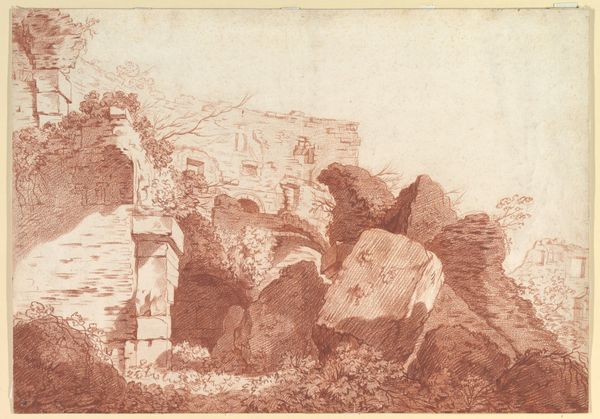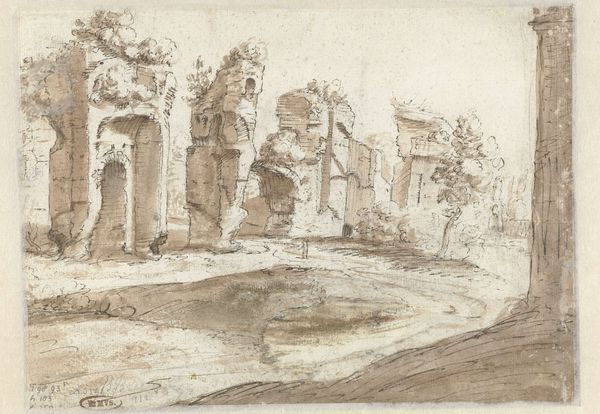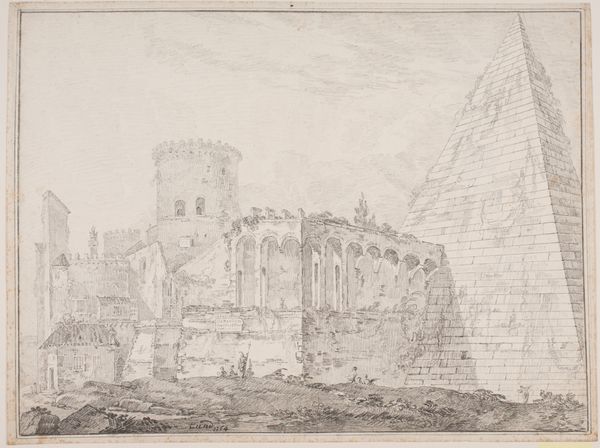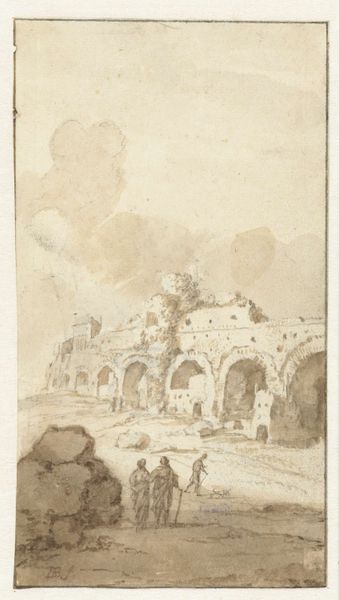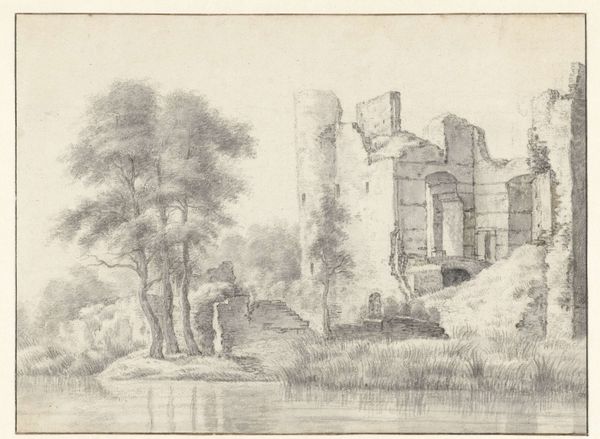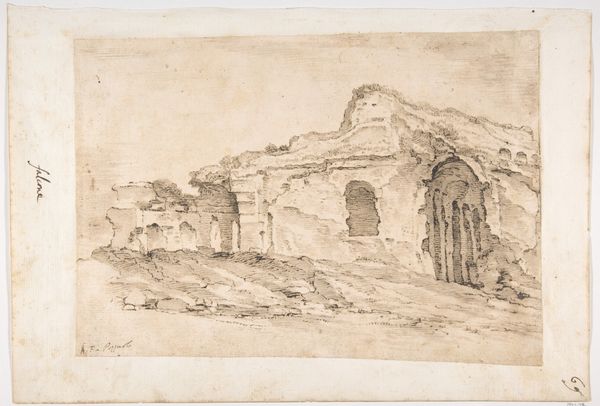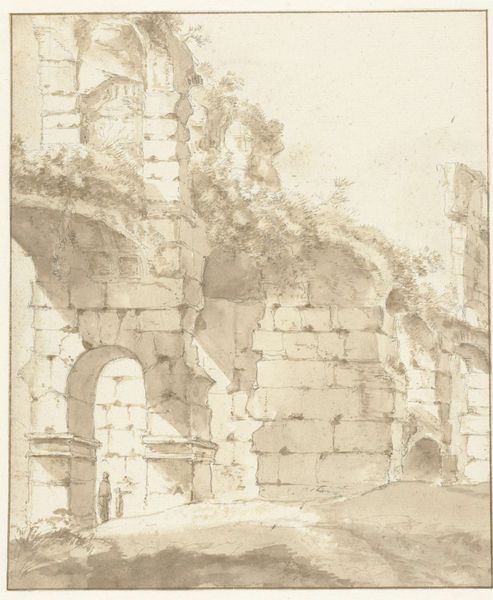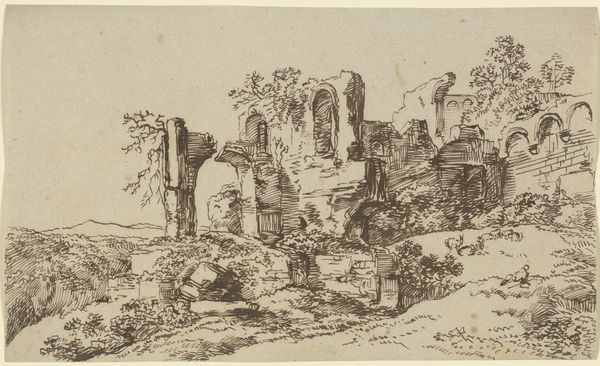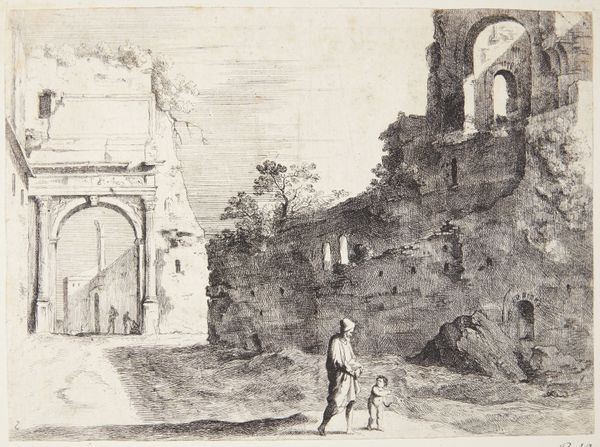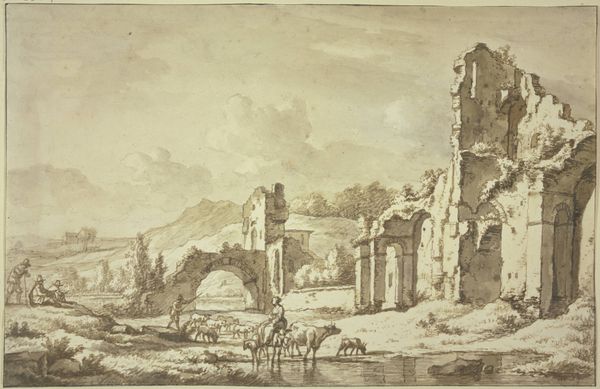
drawing, ink, architecture
#
drawing
#
landscape
#
etching
#
romanesque
#
ink
#
architecture
Dimensions: height 258 mm, width 440 mm
Copyright: Rijks Museum: Open Domain
Editor: Edward Lear's ink drawing, "Gezicht op de Ponte Lupo (bij Tivoli)," possibly from 1845, has a wonderfully decayed feeling. It’s all about these massive, crumbling Roman arches overtaken by nature. What do you see in this piece? Curator: I see a compelling interplay between human construction and the forces of nature. Look closely at the mark-making. Lear meticulously renders the stone blocks, almost celebrating the physical labor embedded in their creation and placement. Then notice how he contrasts this with the softer, looser lines that define the vegetation. Editor: So, you're suggesting that the way he uses ink and line weight speaks to the tension between the built environment and the natural one? Curator: Exactly! Think about the societal context: By the 1840s, the Industrial Revolution was in full swing, and anxieties about the relationship between humans and the environment were growing. Lear’s artistic process—his choice to focus on this specific ruin and render it with such contrasting techniques—hints at a concern about the impact of industrial progress on the classical world, as well as the natural landscape. How does labor relate to decay in this piece? Editor: That makes sense. The painstaking depiction of the aqueduct’s structure only to show its crumbling state could be interpreted as commentary on the transience of even the most ambitious human endeavors. Curator: Precisely. It is a potent statement on materiality and our relationship to it. Considering this drawing within its specific historical and material conditions unlocks deeper meaning. Editor: That really changes how I see it. It’s not just a pretty landscape drawing; it’s a reflection on industry, labor, and how those things impact our world. Curator: Absolutely, examining the "how" something is made helps us to understand "why" it was made.
Comments
No comments
Be the first to comment and join the conversation on the ultimate creative platform.
